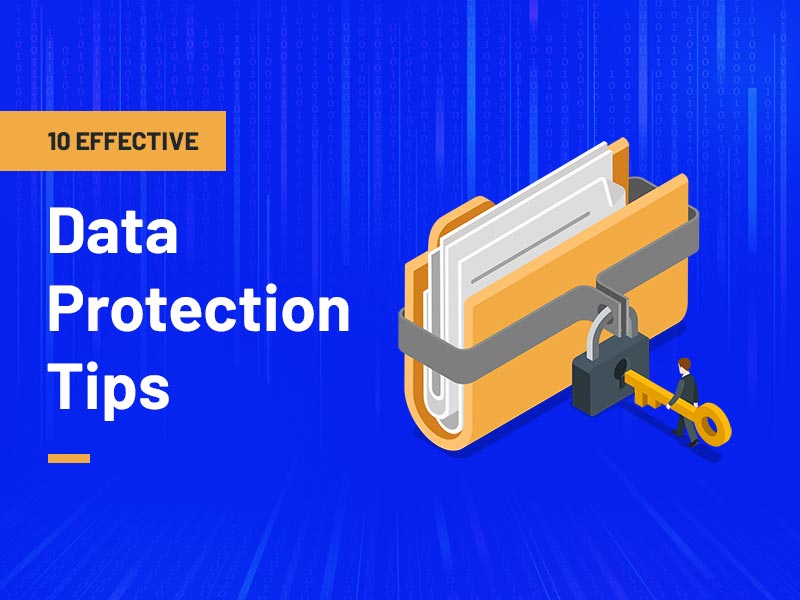As an approach used in data backup and recovery, Continuous Data Protection (CDP) allows for changes made to files or databases to be saved immediately. Unlike traditional backups, which run on schedule (for example: daily or hourly), CDP records every single change made to data, ensuring it is backed up at the moment when it is altered. Thereby, one minute of actual work yields one minute’s protection from harm. This is why the difference with most other backup methods is that CDP constantly captures all modifications made to files and applications on a running basis.
In modern data management, CDP offers more comprehensive data protection and less data loss than traditional backups. By preserving every change made to data in real time, CDP offers more granular recovery points, enabling data lost or damaged to be restored to a specific time immediately before the incident. This can significantly reduce the amount of data lost in a catastrophe or system failure, helping to keep organizations’ business continuity and improve upon mean time between failures statistics for their IT components. Implementation can also simplify recovery management since it eliminates the need for manual merge of incremental backups. This process can take time and increase the chances of errors. In essence, CDP offers modern data management environments a more efficient and secure way to protect data.
Understanding Continuous Data Protection
CDP emerged at the turn of the century (early 2000s) to overtake old-style backups. At first, it was complex and expensive, but with improvements in storage technology and software development, it has become available to more businesses than ever before.
Key Differences from Traditional Backup:
- Granularity: CDP captures every data change, meaning that between backup sets less data stands to be lost, unlike scheduled backups.
- Recovery Point Objective (RPO): CDP offers a very low near zero RPO, while traditional backups might have much higher RPOs due to higher intervals between backups.
- Recovery Time Objective (RTO): CDP, by allowing quick recovery to any point in time, can reduce RTO. But using traditional backups may take a more time-intensive (and uncertain) approach.
- Storage burden: CDP requires more storage because it is recording every change. But new storage technologies are helping this.
How Continuous Data Protection Works
Continuous data protection is a way of ensuring that data is continuously backed up, allowing for the recovery of lost or corrupted data with minimal downtime. Unlike traditional backup systems, which often include periodic snapshots or backups made at specific times, CDP records every change in the data.
- 1. Data Capture: CDP software captures every change made to data in real-time–using what some call “journaling,” where changes are recorded in a journal before being applied to the actual data.
- 2. Data Replication: Captured changes are replicated to a secondary storage location. This can be a local or remote site, providing redundancy in case of a disaster.
- 3. Recovery Point Selection: Users can restore data at any point in time, for granular recovery options. This is useful not only when recovering from data corruption or accidentally deleted files but also after ransomware attacks.
- 4. Recovery Process: When data needs to be recovered, restoring the data to the point in time up to which it has been saved is simple with CDP software–quick and with little downtime, thus minimal data has yet been lost.
CDP technologies and techniques include:
- 1. Journaling: Journaling records each and every change as it is made to the data. This record can be used for debugging purposes or unmaking intermediary changes later on in a transaction stream rather than starting from scratch with all subsequent work lost.
- 2. Replication: To assure that primary storage failures alone will still allow data access, changes in the data are frequently stored. Then when a disaster occurs or the original data has been lost, the changed portion is compared to its original state, and only those parts which are currently different need be reentered from backup media. This can also improve disk subsystem performance because checksum errors between what’s on hard drives might stand out more clearly if they only affect data which has been written since recent media were used.
- 3. Point-in-Time Recovery: With CDP, when the data needs to return to some past state no matter how long ago, that condition could serve as a starting point for normal operations across all enterprise systems without critical conflicts.
- 4. Continuous Monitoring: CDP systems continuously monitor for data changes, to ensure every change is recognized and saved.
- 5. Data Deduplication: CDP systems can use data deduplication techniques to store only unique data blocks. This can greatly reduce the amount of storage space required.
Benefits of Continuous Data Protection
Continuous Data Protection (CDP) delivers several major benefits for data protection and recovery:
- 1. Real-time Data Protection and Recovery: CDP always records modification of data, and, thus, being able recover the data at any point in time, it minimizes data loss and downtime.
- 2. Reduced Data Loss and Downtime: CDP can reduce the risk of losing data simply because it records all changes as they happen. This will not only lead to less downtime but also make it easier and quicker for recovery should catastrophic failure occur.
- 3. Simplified Recovery Point Objectives (RPOs) and Recovery Time Objectives (RTOs): CDP makes it possible for organizations to achieve much closer RPO/RTO targets compared with traditional backup methods. This is because CDP makes it possible to instantly return any previous state, so the effect on data loss or downtime is considerably reduced.
Challenges and Considerations
The deployment of Continuous Data Protection (CDP) may present challenges such as:
- 1. Complexity: CDP implementation requires careful planning and integration. It often uses specialized software or hardware.
- 2. Resource Impact: CDP increases network and storage resource usage, and a system must be able to take on the new load.
- 3. Integration: Integrating CDP with existing backup systems takes work. This involves compatibility with backup software, storage, and applications.
Use Cases and Applications
Continuous Data Protection (CDP) is used in industries and scenarios needing real-time data protection and fast recovery. It is also particularly useful in:
- 1. Financial Services: Monitors transactions, determines whether they are defrauded, and complies with laws as GDPR as well as VCI-DSS.
- 2. Healthcare: Protects patient records, keeps EHRs available, and maintains HIPAA compliance.
- 3. High-Availability Systems: Reduces downtime and minimizes data loss in critical systems for online retail, banking, and communications.
- 4. Legal Services: Safeguards customer data, case files, and legal materials.
- 5. Manufacturing and Supply Chain: Real-time inventory management, order processing.
- 6. E-commerce: Preserves the customers’ data, processing orders at any time of day.
- 7. Telecommunications: Ensures that services can be offered continuously; protecting customer data, and meets regulatory requirements.
Best Practices for Implementing Continuous Data Protection
By implementing Continuous Data Protection (CDP), careful planning followed by execution is necessary. Some good practices include:
Planning and Design:
- Define data protection goals and requirements (RPO, RTO)
- Make infrastructure compatible with CDP
- Make a comprehensive data protection strategy
Testing and Validation:
- Before production, test the CDP implementation
- Backup and recovery procedures should be tested regularly
- Maintain data integrity and data consistency are validated at least quarterly
Monitoring and Management:
- Use monitoring tools to ensure performance and health are normal for all systems
- Set up anomaly alert
- Regularly check that configurations include current data
Security:
- Encrypt data both in motion and at rest
- Access controls should be implemented
- Do regular security tests
Documentation and Training:
- Do implementation and operation manual programs for things
- Train your IT staff
Future Trends in Continuous Data Protection
Future Trends in Continuous Data Protection (CDP) are as follows:
- 1. Integration with Cloud Services: CDP will work more closely with cloud services to provide flexibility and scalability.
- 2. AI-Driven Data Protection: CDP will enhance through AI and HIML analysis of data patterns with automatic responses incorporated.
- 3. Enhanced Automation: CDP will automate tasks such as backup scheduling, and recovery processes to eliminate mistakes.
- 4. Focus on Data Privacy and Security: CDP solutions will emphasize strong encryption as well as access controls to comply with regulations like GDPR.
- 5. Immutable Backups: It is becoming more common for the future that backups cannot be deleted or altered.
- 6. Real-Time Recovery and Zero Data Loss: CDP aims to bring about real-time recovery in combination with zero data loss so as to meet the needs for faster recovery.
In Summary
Continuous Data Protection (CDP) is a method to ensure that all data on a system is constantly backed up and that each change to the data is saved in real-time. This means that even the most recent changes are saved, providing a higher level of protection for your data with less risk of loss.
In traditional backup methods, periodic backups are made at fixed intervals. Unlike this approach, CDP protects data near-continuously: when a change is detected, it gets backed up. This means that even the most recent changes are protected, minimizing the risk of data loss.
CDP uses specialized software to monitor changes in data at the block or file level. When a change is detected, the software backs up data at that mom that data can be restored to any previous point in time.







